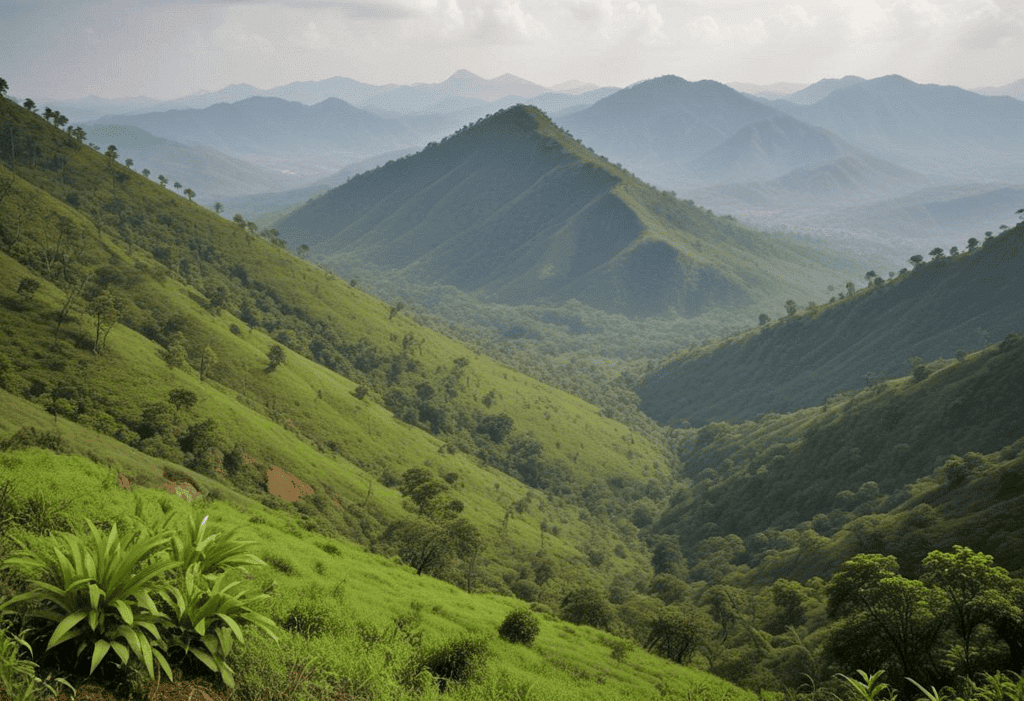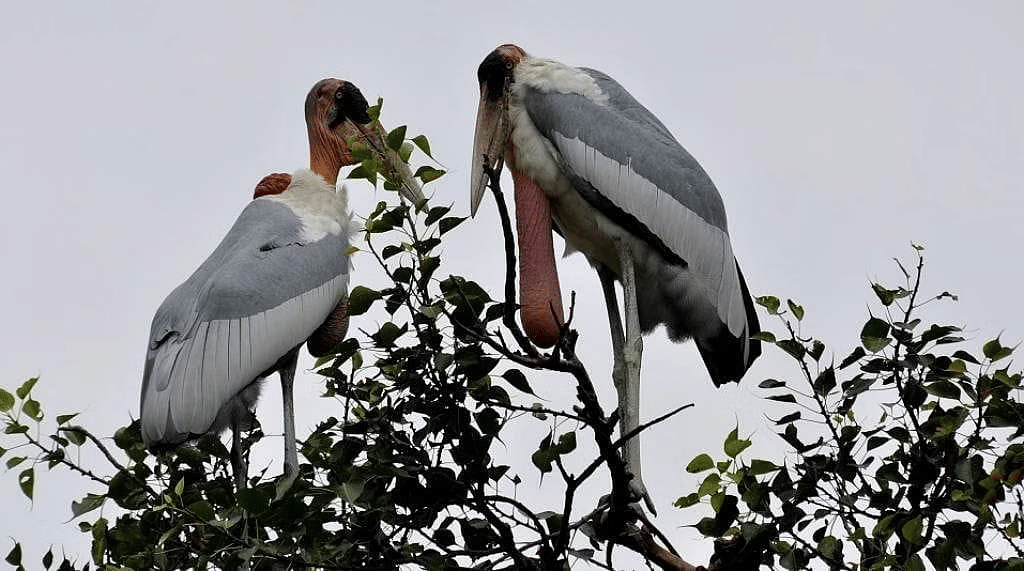Environment and Ecology: June 2024 UPSC Current Affairs | Current Affairs & Hindu Analysis: Daily, Weekly & Monthly PDF Download
Rising Global Temperatures

Why in news?
The world is witnessing a concerning trend of record-breaking temperatures across the globe, exacerbated by global warming. From the scorching 56.7°C recorded in Death Valley, California over a century ago to the recent 52.9°C reading in Delhi, temperature extremes are becoming more prevalent as the planet continues to heat up. If the 52.9°C recorded at a station in Delhi is verified, it would be an all-time high for India.
What is the Historical Context of Global Temperature Records?
Historical High:
- The highest temperature ever recorded on Earth was 56.7°C in Death Valley, California, in 1913.
United Kingdom:
- Surpassed 40°C for the first time in July 2022.
China:
- Recorded its highest temperature of 52°C in a northwestern town last year.
Europe:
- Sicily, Italy, reached 48.8°C in 2021, a record for the continent.
India:
- Rajasthan's Phalodi recorded the highest temperature of 51°C in 2016.
Global Trends:
- An analysis shows nearly 40% of the Earth experienced its highest-ever daily temperature between 2013 and 2023. This includes diverse regions, from Antarctica to various parts of Asia, Europe, and the Americas.
How Global Warming is Exacerbating Global Temperatures?
Definition:
- Global warming refers to the long-term increase in Earth's average surface temperature due to human activities, primarily the emission of greenhouse gases (GHG) like carbon dioxide (CO2) and methane (CH4).
Greenhouse Gases and Temperatures:
- GHGs trap heat in the Earth's atmosphere, preventing it from escaping into space. Increased concentrations of these gases enhance this effect, leading to more heat being retained and higher global temperatures.
Global Temperature Rise:
- The planet's average surface temperature has risen about 1°C since the late 19th century, a change driven largely by increased GHG emissions into the atmosphere and other human activities. The past decade has seen many of the warmest years on record, with 2023 and 2024 showing unprecedented temperature increases. The period from May 2023 to April 2024 was the warmest 12-month period, with global temperatures about 1.61°C above pre-industrial levels.
India Compare to Global Warming Trends:
- India's warming is less than the global average. Indian temperatures have increased by 0.7 degrees Celsius since 1900, while global land temperatures have risen by 1.59°C. When including oceans, global temperatures are now at least 1.1°C higher than pre-industrial levels.
Global Warming and Heatwaves
Geographical Variability:
- Polar Amplification:
- Arctic and other polar areas are warming much faster due to melting sea ice and permafrost.
- Land vs Water:
- Land warms faster than oceans, so continental interiors warm faster than coastal regions.
- Elevation:
- Higher elevations experience slower warming as the atmosphere traps less heat.
- Ocean Currents:
- Regions influenced by warm currents like the Gulf Stream warm faster.
- Urban Heat Islands (UHIs):
- UHIs are metropolitan areas significantly warmer than surrounding regions due to heat-absorbing surfaces and energy use. As global temperatures rise, UHI intensity is expected to increase, amplifying heatwaves in cities. The higher urban temperatures also drive greater fossil fuel-powered cooling, further contributing to and warming. Populations in UHIs are especially vulnerable to the health risks posed by the compounded effects of UHIs and climate change.
What are the Consequences of Rising Global Temperatures?
Sea Level Rise:
- As temperatures rise, glaciers and ice sheets melt, adding water to the oceans and causing sea levels to rise. This inundates coastal areas, displaces communities, and disrupts ecosystems. Global sea level has risen by about 8 inches since 1880 and is projected to rise by at least another foot by 2100. In a high-emissions scenario, it could potentially rise as high as 6.6 feet.
Ocean Acidification:
- The oceans absorb a significant amount of the CO2 released into the atmosphere. This makes the oceans more acidic, harming marine life and disrupting ocean ecosystems crucial for the health of the planet.
Hurricanes:
- Hurricanes are expected to become stronger and more intense as the climate warms, leading to increased storm intensity and rainfall rates.
Droughts and Heat Waves:
- Droughts and heat waves are expected to become more intense, while cold waves are expected to become less intense and less frequent.
Wildfire Season:
- Wildfire season has been prolonged and intensified due to warming temperatures and long-term drought, increasing the risk of fires. Human-caused climate change has already doubled the area of forest burned and is projected to further increase the amount of land consumed by wildfires in Western states by around 2050.
Biodiversity Loss:
- Rising temperatures and changing weather patterns disrupt ecosystems and habitats, pushing many plant and animal species towards extinction. Climate change: Extreme weather disrupts food production, leading to shortages and price hikes that harm vulnerable populations.
Way Forward
Six-Sector Solution:
- Follow the United Nations Environment Programme’s roadmap, which includes reducing emissions across sectors like energy, industry, agriculture, forests, transport, and buildings.
Carbon Offsetting:
- Invest in projects that draw down carbon from the atmosphere, such as reforestation or carbon capture and storage.
Reduction in Greenhouse Gas Emissions:
- Transition to renewable energy sources like Solar, wind, geothermal, and hydro power can significantly reduce our dependence on fossil fuels. Implementing energy-efficient practices in homes, industries, and transportation can drastically cut down on energy consumption.
Sustainable Agriculture:
- Adopt climate-smart agricultural practices, such as sustainable irrigation techniques, drought-resistant crop varieties agroforestry. Enhance food storage and distribution systems to minimise losses and ensure access to food during extreme weather events. Reducing deforestation, utilising regenerative agriculture techniques, and promoting plant-based diets can all contribute.
Support Climate-Vulnerable Populations:
- Assist communities most vulnerable to climate change impacts, such as those in low-lying coastal areas and developing countries.
Western Ghats Eco-Sensitive Area

Why in News?
Recently, three out of the six states where the Centre has proposed ‘Eco-sensitive areas (ESA)’ to safeguard the Western Ghats have requested a reduction in the size of these ESAs.
Eco-Sensitive Areas (ESA)
The National Environment Policy (2006) defined Eco-Sensitive Zones as areas/zones with identified environmental resources having incomparable values which require special attention for their conservation because of their landscape, wildlife, biodiversity, historical, and natural values.
- Designation: Eco-Sensitive Areas (ESAs) are designated within a 10-kilometer radius around Protected Areas, National Parks, and Wildlife Sanctuaries.
- Notified by: The Ministry of Environment, Forest, and Climate Change (MoEFCC) notifies them under the Environment Protection Act of 1986.
- Objective: The primary objective is to regulate specific activities near these areas to mitigate their adverse effects on the delicate ecosystem surrounding the protected zones.
About Western Ghats
- About: The Western Ghats are a mountain range that runs almost parallel to India’s western coast. They span 1,600 kilometres from the mouth of the Tapti River near the Gujarat-Maharashtra border to Kanyakumari in Tamil Nadu.
- Coverage: It covers six states: Tamil Nadu, Karnataka, Kerala, Goa, Maharashtra, and Gujarat.
- Biodiversity: The Western Ghats harbor over 30% of India’s plant, fish, herpetofauna, bird, and mammal species. Additionally, it boasts the unique shola ecosystem, characterised by montane grasslands interspersed with patches of evergreen forest.
- Resources: The Western Ghats are abundant in certain areas of iron, manganese, and bauxite ores. This region supports numerous plantation crops and is a significant source of timber. It also contains many wild relatives of cultivated plants, such as pepper, cardamom, mango, jackfruit, and plantain.
The Global Nitrous Oxide Budget 2024

Why in News?
According to a recent study by the Global Carbon Project (GCP) titled "Global Nitrous Oxide Budget (1980-2020)", nitrous oxide emissions have been steadily increasing between 1980 and 2020. In 2021 and 2022, the release of nitrous oxide into the atmosphere surged, despite the urgent need to reduce greenhouse gas emissions to combat global warming.
Key Findings of the Study
Alarming Rise in Nitrous Oxide (N2O) Emission:
- N2O emissions from human activities have increased by 40% (3 million metric tons of N2O per year) between 1980 and 2020.
- Top 5 Emitters of N2O were China (16.7%), India (10.9%), US (5.7%), Brazil (5.3%), and Russia (4.6%). India stands as the second-largest emitter of N2O globally after China.
- In per-capita terms, India has the lowest per capita emission of 0.8 kg N O/person, lower than China, US, Brazil, and Russia.
- The atmospheric NO concentration reached 336 parts per billion in 2022, a 25% rise over pre-industrial levels, exceeding IPCC estimates.
Sources of Nitrous Oxide Emissions:
- Natural sources such as oceans, inland water bodies, and soil contributed 11.8% of global N2O emissions between 2010 and 2019.
- Agricultural activities accounted for 74% of human-driven nitrous oxide emissions, primarily due to chemical fertilizers and animal waste on croplands.
- The growing use of nitrogen fertilizers globally is escalating N2O concentrations.
Rate/Growth of Emissions:
- Emissions from agriculture are escalating, while those from other sectors like fossil fuels and the chemical industry are either stable or declining globally.
- Emission patterns varied across regions, with South Asia experiencing the largest increase in N2O emissions.
Implications of Rising Nitrous Oxide Emissions
Intensified Global Warming:
- N2O is about 300 times more effective at trapping heat than CO2 over a century, significantly contributing to global warming.
Threat to Ozone Layer:
- N2O breakdown in the stratosphere releases nitrogen oxides that harm the ozone layer, leading to increased UV radiation.
Challenge to Food Security:
- The use of nitrogen-based fertilizers in agriculture is a major source of N2O emissions, posing a challenge to food security and climate goals.
Challenge to Paris Climate Agreement:
- Rising N2O emissions present a hurdle in meeting the goals of the Paris Climate Agreement.
Proposed Solutions to Mitigate Nitrous Oxide Emissions
Innovative Agricultural Practices:
- Precision Agriculture: Utilizing technologies like soil sensors can optimize fertilization, reducing N2O formation.
- Nitrification Inhibitors: Additives that slow ammonium conversion in fertilizers can curb N2O emissions.
- Cover Cropping: Planting cover crops helps retain soil moisture and nitrogen, reducing N2O release.
- Using Anti-Methanogenic Feed: Anti-methanogenic feeds for cattle can reduce methane and nitrogen emissions.
- Using Nano-Fertilizers: Nanotechnology can minimize excess nitrogen and N2O emissions in agriculture.
Effective Policy Measures:
- Emission Trading Schemes: Implementing cap-and-trade systems can incentivize cleaner practices.
- Targeted Subsidies: Governments can support farmers transitioning to sustainable practices.
- Research and Development: Increased funding for research on N2O mitigation strategies is crucial for progress.
Addressing Emissions from Other Sources:
- Industrial Processes: Regulations and cleaner technologies can reduce N2O emissions from industrial sources.
- Combustion: Optimizing combustion processes can help curb N2O emissions.
- Waste Management: Advancements in waste-to-energy conversion can decrease N2O emissions from waste sources.
State of the Ocean Report 2024

Why in news?
The UNESCO State of the Ocean Report 2024 reveals that ocean warming has intensified, with the rate doubling to 0.66 ± 0.10 W/m2 over the past two decades. The report provides valuable insights into ocean-related scientific endeavors and offers analyses depicting the current and future state of the ocean.
- Observations and research on the global state of oceans are inadequate, with a lack of sufficient and consolidated data to develop solutions for multiple ocean crises and validate new technologies focusing on carbon dioxide removal from the atmosphere.
- Enroll now for UPSC Online Course
Key Highlights of the UNESCO State of the Ocean Report 2024
- Rising Ocean Temperature: The upper 2,000 meters of oceans experienced a warming rate of 0.32 ± 0.03 W/m2 from 1960 to 2023.
- Increased Ocean Heat: Approximately 90% of the Earth's energy imbalance is absorbed by oceans, leading to a cumulative rise in ocean heat content within the upper 2,000 meters of the water column.
- Impact of OHC: Elevated ocean heat content hinders the mixing of ocean layers, potentially decreasing the oxygen content of near-surface high-latitude waters reaching deeper ocean layers.
- Average increase in ocean acidification: Global surface ocean pH has steadily declined by 0.017-0.027 pH units per decade in the open ocean since the late 1980s.
- Inadequate Data: As of 2024, only 638 stations have recorded ocean pH levels, resulting in insufficient current coverage and a time series that is not extensive enough to identify trends and data gaps across all regions.
Other sources of Acidification
- Coastal waters may become acidic due to natural processes like freshwater influx, biological activities, temperature fluctuations, and climate phenomena such as El Nino/Southern Oscillation (ENSO).
Sea level Rise
- The global mean sea level rose at a rate of 3.4 +/- 0.3 mm/year from 1993 to 2023.
Recommendation
- Enhance space-based and in situ observing systems worldwide to monitor sea level rise at global, regional, and coastal scales effectively.
Recent Trends in Marine Carbon Dioxide Removal (mCDR) Technologies
- mCDR technologies involve methods that capture carbon dioxide from the atmosphere and securely store it within the ocean ecosystem.
Challenges
- Widespread technical, environmental, political, legal, and regulatory challenges accompany the increased use of mCDR technologies, with uncertainties surrounding the unintended consequences of these innovations.
Coastal Blue Ecosystem Restoration
- The report questions the efficacy of restoring or expanding coastal blue carbon habitats like mangrove forests, seagrass meadows, and tidal saltmarshes to enhance carbon sequestration.
Indian House Crows
Why in News?
Recently the Kenyan government has announced an action plan to eliminate a million Indian House Crows (Corvus splendens) by the end of 2024. This decision stems from the birds' significant negative impact on local ecosystems and their nuisance to the public, particularly in the Kenyan coastal region.
What is the Kenyan Government Action Plan?
Invasive Species Issue:
- The Indian House Crow is described as an invasive alien species from India and parts of Asia, introduced to East Africa via shipping activities.
Ecological Impact:
- The crows prey on endangered local bird species, destroy nests, and eat eggs and chicks, leading to a decline in indigenous bird populations.
- This decline disrupts the ecosystem, allowing pests insects to proliferate, further harming the environment.
Historical Effort:
- A similar effort in Kenya over 20 years ago managed to reduce their numbers temporarily.
Government and Community Response:
- An action plan to combat the crow menace includes mechanical and targeted methods for culling the birds, and use of licensed poison for population control.
What are the Key Facts About Indian House Crows?
Common names:
- Indian house crow, house crow, Indian crow, grey-necked crow, Ceylon crow, Colombo crow
Family:
- Corvidae
Taxonomy:
- The nominate race of C. splendens exists in India, Nepal, Bangladesh and has a grey neck collar.
Conservation Status:
- IUCN Status: Least Concerned
Wildlife Protection Act:
- Schedule II
Greater Adjutant Storks (Garuda)

Why in news?
Recently, Bihar has decided to tag greater adjutant storks locally known as ‘Garuda’ with GPS trackers to monitor their movement as part of efforts to conserve them.
Key Points
Scientific Name:
Leptoptilos dubiusGenus:
The greater adjutant is a member of the stork family, Ciconiidae. There are about 20 species in the family. They are long-necked large birds.Habitat:
Once found across South and Southeast Asia, the Greater Adjutant is one of the most threatened stork species in the world. There are only three known breeding grounds – one in Cambodia and two in India (Assam and Bihar).Threat:
The widespread destruction and degradation of wetlands that this scavenger bird needs to forage (i.e. search for food) and the loss of its nesting trees led to a decline.Protection Status:
IUCN Red List Endangered, Wildlife (Protection) Act 1972: Schedule IVSignificance:
- Religious Icon: They are considered the mount of Vishnu, one of Hinduism’s prime deities. Some worship the bird and call it “Garuda Maharaj” (Lord Garuda) or “Guru Garuda” (Great Teacher Garuda).
- Helpful for Farmers: They help farmers by killing rats and other farm pests.
Nagi and Nakti Bird Sanctuaries Recognised as Ramsar Sites
Why in news?
Two bird sanctuaries of Bihar, Nagi and Nakti, have been recognized as wetlands of international importance under the Ramsar Convention on World Environment Day (5 June 2024). This inclusion brings the total count of Ramsar wetland sites in India to 82, with the highest number in the UK (175) followed by Mexico (144). Bihar's first Ramsar Site was Kanwar Lake in Begusarai district in 2020. There are also tentative sites for inclusion from Bihar such as Kusheshwar Asthan in Darbhanga, Tal Baraila in Vaishali, Gogabeel in Katihar, Nagi, and Nakati dams in Jamui.
About Nagi and Nakti Bird Sanctuaries
Location:
- The Nagi and Nakti Bird Sanctuaries are located in the Jhajha forest range of Bihar's Jamui district.
Size:
- The sanctuaries cover 791 and 333 hectares, respectively.
Background:
- Designated as Bird Sanctuaries in 1984, these wetlands are human-made and were primarily developed for irrigation purposes through the construction of the Nakti Dam.
Wildlife:
- The sanctuaries support globally threatened species, including the endangered Indian elephant (Elephas maximus indicus) and a vulnerable native catfish (Wallago attu).
Ecology:
- Surrounded by hills and a largely dry deciduous forest, these sanctuaries serve as a wintering habitat for migratory birds, hosting over 20,000 birds during winter months, including a significant number of red-crested pochards (Netta rufina).
Recent Observations:
- According to the Asiatic Waterbird Census (AWC) 2023, Nakti bird sanctuary reported the highest number of birds with 7,844, followed by Nagi bird sanctuary with 6,938 birds.
 |
Download the notes
Environment and Ecology: June 2024 UPSC Current Affairs
|
Download as PDF |
About Ramsar Convention
Establishment:
- The Ramsar Convention, established by UNESCO in 1971, identifies wetlands of international importance. The first Ramsar Site in India was Chilika Lake in Orissa.
Significance:
- Ramsar recognition is crucial for wetlands that provide habitat for waterfowl, with India's largest Ramsar Site being the Sundarbans in West Bengal.
About Wetlands
Nature of Wetlands:
- Wetlands are saturated ecosystems that include various habitats such as mangroves, marshes, rivers, lakes, and floodplains, supporting approximately 40% of all plant and animal species despite covering only 6% of Earth's land surface.
World Environment Day 2024
Why in news?
World Environment Day, celebrated annually on June 5, witnessed a remarkable 51st edition marked by an exceptional turnout of 3,854 official events globally and millions of online engagements.
About World Environment Day
- World Environment Day falls on June 5 every year, aiming to advocate sustainable practices and the conservation of our planet.
- Managed by the United Nations Environment Programme (UNEP), it serves as a premier global platform for public engagement on pressing environmental issues.
Theme of World Environment Day 2024:
The theme for World Environment Day 2024 is centered around land restoration, desertification, and drought resilience.
History:
- In 1972, World Environment Day was established during the Stockholm Conference on the Human Environment, with the United Nations General Assembly designating June 5 for the event.
- The inaugural celebration in 1973, themed 'Only One Earth', marked the beginning of a global initiative involving over 150 countries.
Key Facts about United Nations Environment Programme (UNEP):
- UNEP, a leading environmental authority, focuses on enhancing environmental standards and practices globally.
- The organization addresses core environmental challenges such as climate change, biodiversity loss, and pollution, aiming to transition countries towards sustainable, resource-efficient economies.
- UNEP, headquartered in Nairobi, Kenya, supports various multilateral environmental agreements and provides vital data for informed policy-making.
Reports published by UNEP:
- Emission Gap Report
- Global Environment Outlook
- Frontiers
- Invest into Healthy Planet
Functions of UNEP:
- Secretariat for multiple environmental agreements including CBD, CITES, Minamata Convention, and more.
Minamata Convention:
The Minamata Convention on Mercury targets activities contributing to widespread mercury pollution, aiming to reduce global contamination over the long term.
Conservation Breeding in Indira Gandhi Zoological Park (IGZP)
Why in news?
Recently, the Indira Gandhi Zoological Park (IGZP) in Visakhapatnam has been at the forefront of wildlife conservation in India, particularly in the successful breeding and nurturing of Striped hyenas and Asiatic wild dogs (Dhole).
What are the Key Points About Indira Gandhi Zoological Park (IGZP)?
- It is an ex-situ facility established in 1977, located amidst Seethakonda Reserve Forest in the Visakhapatnam district of Andhra Pradesh.
- Surrounded by Eastern Ghats on three sides and the Bay of Bengal on the fourth side.
- A large category zoo recognised by the Central Zoo Authority.
- Due to its close proximity to Kambalakonda Wildlife Sanctuary, it is also home to many free-ranging animals and birds.
- IGZP has successfully bred:
- Striped hyenas
- Indian grey wolves
- Ring-tailed lemurs
- Indian bison
- Blue gold macaws
- Jungle cats
- Eclectus parrots
Philippines Halted Production of GM Crops
Why in News?
Recently, a court in the Philippines has canceled the permits that allowed for the commercial cultivation of Genetically Modified (GM) Golden Rice and Bt Eggplant in the country. Critics argue that the decision could harm children with vitamin A deficiency, but the court's concerns about safety violations are being ignored.
What is GM Golden Rice and Bt Eggplant?
GM Golden Rice:
- Developed in the late 1990s by researchers at the Swiss Federal Institute of Technology and the International Rice Research Institute.
- A type of rice genetically modified to have higher amounts of iron, zinc, and beta-carotene, which the body can convert into vitamin A.
- Named for its yellow color, addressing vitamin A deficiency, a major health issue in many developing countries.
- Has the potential to provide up to 50% of the recommended daily intake of vitamin A.
Bt Eggplant:
- Developed by the Indian seed company Mahyco in collaboration with the University of Agricultural Sciences, Dharwad.
- A genetically modified variety of eggplant engineered to produce a protein toxic to certain insect pests, reducing pesticide use.
- Approved for cultivation in Bangladesh in 2013, but its commercial release in India was halted in 2010 due to concerns.
What are Genetically Modified (GM) Crops?
About:
- The global area under GM crops reached 191.7 million hectares in 2020, with India commercially approving Bt cotton in 2002.
- GMO and transgenic organism are terms used interchangeably, with all transgenic organisms being GMOs.
Potential Benefits of GM Crops:
- Increased Productivity: GM crops can have higher yields, resist pests, and tolerate environmental stresses.
- Enhanced Nutritional Value: GM crops can contain increased levels of nutrients, improving food security.
- Reduced Reliance on Pesticides: Pest-resistant GM crops can lower pesticide use.
Potential Concerns:
- Environmental Risks: GM crops might have unintended ecological consequences.
- Human Health Risks: Long-term effects of consuming GM foods are not fully understood.
- Impact on Non-target Organisms: Unintended consequences on other organisms need evaluation.
- Ethical and Socioeconomic Considerations: Concerns about ownership concentration and impact on farmers and traditional practices.
What is the Regulatory Framework for GM Crops in India?
Genetic Engineering Appraisal Committee (GEAC) evaluates and approves GM crop cultivation. GM foods are also regulated by the Food Safety and Standards Authority of India (FSSAI).
Acts and Rules that Regulate GM Crops in India:
- Environment Protection Act, 1986 (EPA)
- Biological Diversity Act, 2002
- Plant Quarantine Order, 2003
- GM policy under Foreign Trade Policy, Food Safety and Standards Act, 2006
Way Forward
Strengthening the Regulatory Umbrella: Enhance transparency and scientific evaluation processes for responsible adoption of GM technology.
Streamlining Approvals for Innovation:
- Explore streamlining technology approval processes without compromising safety.
Science-Driven Decision Making:
- Policy decisions on GM crops should be rooted in scientific evidence.
Rigorous Monitoring and Enforcement:
- Ensure strict adherence to safety protocols throughout the cultivation cycle.
Conclusion
The debate around GM crops remains complex, with proponents highlighting benefits and critics raising concerns. Continued research, transparent regulation, and stakeholder dialogue are crucial for sustainable agricultural development.
KAZA Summit
Why in news?
At the KAZA Summit 2024, leaders of the Kavango-Zambezi Trans-Frontier Conservation Area (KAZA-TFCA) decided to oppose the ivory trade ban at the CoP 20 of CITES.
About CITES
Convention on International Trade in Endangered Species of Wild Fauna and Flora (CITES) is an international agreement between 184 governments to ensure that international trade in wild animals and plants does not threaten the survival of the species.
The convention entered into force in 1975. India has been a CITES Party since 1976.
All import, export and re-export of species covered under CITES must be authorized through a permit system.
Appendix of CITES:
Appendix I:
- Prohibits commercial trade of critically endangered species.
Appendix II:
- Regulates trade to prevent over-exploitation.
Appendix III:
- Protects species under national laws.
Every two years, the supreme decision-making body of CITES, applies a set of biological and trade criteria to evaluate proposals from parties to decide if a species should be in Appendix I or II.
Ivory Trade:
- The ivory trade is the commercial trade in elephant ivory tusks and other ivory products.
- At least 20,000 African elephants are illegally killed for their tusks each year.
- The ivory trade threatens elephant survival, harms ecosystems, endangers local communities, and undermines security.
- The ivory trade has traditionally involved smuggling whole or partial elephant tusks from Africa to Asia, where they would be processed and carved into ivory products.
- The demand for ivory has been fueled primarily by a growing middle class in China, where ivory carving is a longstanding tradition.
Reasons Behind Advocating for Trade Ban Lift:
- Southern African leaders seek to lift CITES ivory ban for economic gain, citing $1 billion value. KAZA states hold a $1 billion ivory stockpile, with Zimbabwe's 166-ton stash worth $600 million.
Migratory Diadromous Fishes
Why in news?
The study, published in the British Ecological Society’s Journal of Applied Ecology, found that Marine Protected Areas (MPAs) designated to protect diadromous fish species did not align with their core habitats.
About Diadromous fish:
- These are fish species that migrate between saltwater and freshwater environments.
- Examples include the allis shad (Alosa alosa), twait shad (Alosa fallax), Mediterranean twaite shad (Alosa agone), and the European eel (Anguilla anguilla).
- To better understand these movements, scientists have classified these migrations into several categories:
- Anadromous fish: born in freshwater, then migrate to the ocean as juveniles where they grow into adults before migrating back into freshwater to spawn.
- Catadromous fish: born in saltwater, then migrate into freshwater as juveniles where they grow into adults before migrating back into the ocean to spawn.
- Amphidromous fish: born in freshwater/estuaries, then drift into the ocean as larvae before migrating back into freshwater to grow into adults and spawn.
- Potamodromous fish: born in upstream freshwater habitats, then migrate downstream (still in freshwater) as juveniles to grow into adults before migrating back upstream to spawn.
- Threats: Diadromous fish are sensitive to anthropogenic pressures including agricultural and pollutant runoffs, habitat destruction, barriers to migration, fishing, bycatch, and climate change.
|
39 videos|4845 docs|1051 tests
|
FAQs on Environment and Ecology: June 2024 UPSC Current Affairs - Current Affairs & Hindu Analysis: Daily, Weekly & Monthly
| 1. What are the key highlights of the UNESCO State of the Ocean Report 2024? |  |
| 2. What is the significance of the Indian House Crows in the context of environment and ecology? |  |
| 3. What are the key facts about Greater Adjutant Storks (Garuda) mentioned in the article? |  |
| 4. How is the Kenyan Government addressing environmental issues mentioned in the article? |  |
| 5. What insights does the Global Nitrous Oxide Budget 2024 provide in relation to environmental conservation? |  |





















